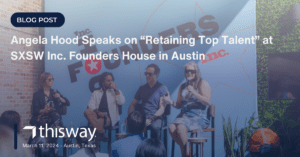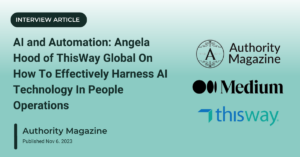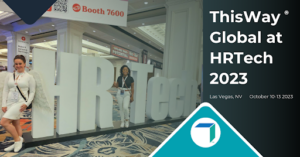In providing a host of benefits, Human Resource (HR) technology is increasingly becoming a solution for businesses to manage workflows throughout the employee life cycle.
In fact, 55 percent of HR professionals are spending more money on HR technology in 2022, according to a survey by TrustRadius.
Technology can organize and consolidate processes and information from hiring to performance management and compensation practices and help HR teams save time. By automating manual tasks, HR can focus on delivering more value-added services and strategic initiatives to enhance the employee experience.
However, as more and more employers embrace artificial intelligence for HR, this opens up some questions about compliance. Recently, the Equal Employment Opportunity Commission (EEOC) and the Department of Justice released guidance to help employers identify some areas to be aware of involving AI and the Americans with Disabilities Act (ADA).
Here, we’ll dive into some topics they cover to ensure your hiring technology isn’t screening out qualified candidates with disabilities.
Artificial Intelligence for HR and Recruitment
Finding the right candidate for a role can be tough. For some employers, the number of resumes that come in for a single job posting can be overwhelming at times. Others are seeing a sizable change in the application volume and are moving more and more to sourcing candidates.
In both of these scenarios, recruiting technology is using AI and algorithms to automate and streamline the sourcing and hiring process. As a result, 38 percent of businesses with AI projects plan to include talent acquisition as a focus area.
AI can be used during the screening process by scanning resumes for keywords. Hiring technology can automate recruitment by posting job ads as well as screening and evaluating candidates for hard, soft and transferable skills.
ADA Regulations and Hiring
The Americans with Disabilities Act (ADA) is a federal law applying to all employers in the public and private sectors. The goal of the ADA is to prevent discrimination against people with mental or physical disabilities in all areas of employment, including recruitment. It also requires employers to provide reasonable accommodations for people with disabilities.
So, for companies using AI in HR, you need to ensure that it doesn’t intentionally or unintentionally disadvantage or discriminate against candidates with disabilities. This practice is in the favor of employers because fair recruitment extends their reach to qualified people that are being overlooked by their competition. The advantage is given to the most fair employers.
With today’s quick pace of technological innovation, individual cities like New York and states like California are proposing their own regulations, and the EEOC is looking at this on the federal level. You can check out the Chad & Cheese podcast interview with EEOC Commissioner, Keith Sonderling, to learn more.
3 Things To Watch Out for In AI Hiring Technology
When looking at recruitment technology, here are some areas you can consider to help keep your hiring practices from discriminating against candidates with disabilities.
1. Screening criteria and tech behind the solutions
Understanding the data used to screen candidates is critical to ensure it’s not disqualifying applicants with disabilities who could perform the role given reasonable accommodations. The system should screen candidates based only on the necessary qualifications to do the role.
Recruitment software can affect people with different disabilities in different ways. As you evaluate hiring solutions, you should check to see if the user experience can support a broad range of potential needs. And, if an applicant requests reasonable accommodations, you should be able to provide them.
The EEOC recommends “promising practices” to avoid ADA violations. Employment technology should make a point to state that reasonable accommodations are available to people with disabilities and provide clear instructions for requesting needed accommodations. It should also make a point to ensure that making such accommodations will not hurt or diminish the applicants opportunity with the employer.
2. Evaluations and tests for skills
The ADA prohibits inquiries or exams related to disabilities or medical conditions. Recruiting solutions with testing capabilities shouldn’t require applicants to disclose medical or disability-related information.
Some assessments call for candidates to type or use video, facial recognition, or audio components. Testing should be limited to evaluating relevant job functions and able to be completed with reasonable accommodations if needed.
3. Providing reasonable accommodations
A reasonable accommodation is when businesses modify processes, such as providing assistive equipment, so candidates with disabilities have an equal chance to be hired for a job.
To help facilitate this, you can be transparent with applicants on how you use technology in your hiring process and how they’ll be assessed.
Applicants should be able to request a reasonable accommodation without impacting their candidacy. You can let candidates know how to ask for accommodations and ensure your employees are aware and trained on how to respond to these requests.
When looking at your practices, you want to have a set process and documentation for making sure this happens while protecting both the candidate and your business.
Recruitment Technology To Improve Hiring and Diversity
There are a number of benefits of AI in HR and using automation to improve the candidate and employee experience. But, as HR technology becomes more prevalent, it’s good to be aware of additional considerations to prevent tech from hindering your goals and running against ADA regulations. For more information, you can access the full guidance here.
When used in the right ways, recruitment technology can help create a memorable candidate experience and support HR teams in managing the hiring process to increase diversity and improve recruitment and your overall workforce.









